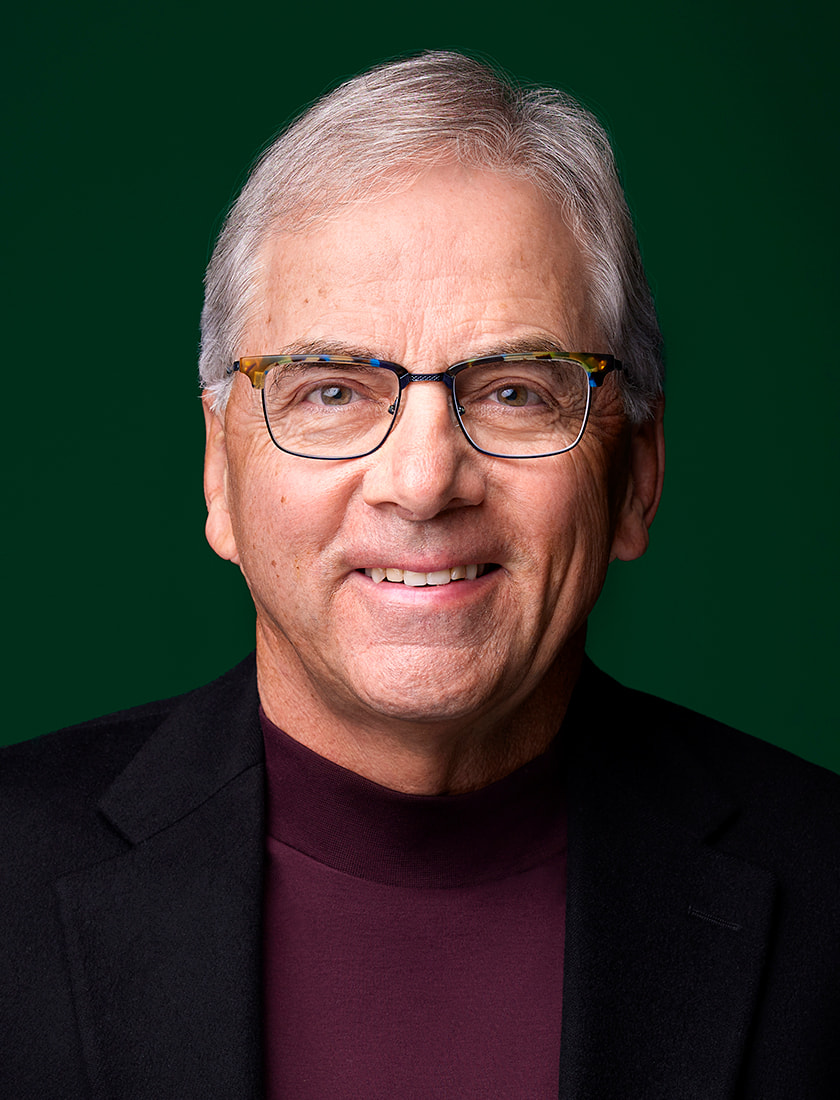With their newly fitted facial prosthetics, patients at the Institute for Reconstructive Sciences in Medicine (iRSM) would be sent to stroll through the nearby West Edmonton Mall.
The WEM test, as plastic surgeon and institute co-founder Gordon H. Wilkes, ’73 BSc(Med), ’75 MD, called it, was a key measure of success.
One fellow who had avoided being in public after his ear was ripped off in a car accident “walked around the mall for a while and nobody noticed him,” Wilkes recalls. “Nobody was staring at him. He came back with a big smile.”
Facing challenges
When iRSM opened at the Misericordia Hospital in 1993, it was North America’s first purpose-designed facility to help people with missing features of the head or neck. It used plastic surgery and craniofacial osseointegration, an emerging technology that involved attaching facial prosthetics with bone-anchored titanium implants.
The physical absence of a nose, ear, eye or cheek often comes with psychological distress and a heightened self-consciousness. “The public tends to not see these people because they just don’t go out,” Wilkes says. It also meant that Wilkes, when trying to win support from Alberta Health, couldn’t provide much context about potential patient impact.
Serendipity knocks
Two fortuitous introductions got the ball rolling.
The first was Wilkes’ introduction to the concept of osseointegrated facial prosthetics at a conference. The second was a Christmas party introduction to Johan Wolfaardt, U of A dentistry professor and eventual institute co-founder.
Wilkes had booked Harold McComb, an Australian cleft lip and palate expert, as a conference speaker. McComb offered to do a second presentation on facial prosthetics, which included a video showing a man casually removing — and replacing — his prosthetic nose, cheek and palate. Wilkes was intrigued but didn’t know anyone who knew anything about prosthetics or implants.
That was remedied when Wilkes got an invitation to the dean’s Christmas party. There he met Wolfaardt.
“If I wasn’t in charge of the scientific program. If I hadn’t chosen Dr. McComb to come. If I hadn’t gone to that Christmas party,” muses Wilkes. “It really changed the direction of my surgical career.”
[It was] a passion, a calling. … For Gordon Wilkes, this was about creating hope for patients [who] historically had little hope of access to innovation.
Johan Wolfaardt, professor emeritus, Faculty of Medicine & Dentistry
The pilot project
The institute’s seed money came from a $25,000, no-strings-attached donation from the Mayfield Rotary Club. With that, Wilkes and Wolfaardt were able to get training, purchase equipment and then do a pilot project in which 10 Albertans were fitted with osseointegrated prosthetics.
A big part of the sales pitch made to Alberta Health was photos of people who were treated and a video of one patient talking about how the technology had changed their life. “The thought of a plastic surgeon and a dentist wanting to do implants and wanting [the health system] to pay for it didn’t really resonate with them,” Wilkes says.
But the testimonials did. “We turned on the lights, and the mood in the room had completely changed.”
Go Deeper
Pipe dreams
The child of two U of A grads, Wilkes regularly attended varsity guest weekends, including a memorable year with a glass-blowing demonstration. Wilkes told his mother he’d found his calling and “she probably just rolled her eyes,” he recalls. “Needless to say when I got to medical school, there weren’t any glass-blowing courses.”
Plastics and perception
Plastic surgery is “a very misunderstood specialty,” Wilkes says. He developed expertise in repairing cleft lips and palates in children and loves the careful, meticulous work. “If you walked into a plastic surgery ward, it is so different from what you would think from watching television.”
Institute evolution
In 1993, iRSM had three people, a focused specialty and no plan for growth. Today, it has more than 20 employees and an international reputation for its groundbreaking work in medical reconstructive science. “Although its origins were sort of serendipitous, once we got the equipment we had a purpose: keep going and see how many people we can help.”
Next gen
Since Wilkes’s retirement in 2018, he has been dusting off his childhood piano skills and learning bass guitar. It was the right time to leave, he says. “There were lots of young, keen, excellent surgeons coming up that needed space to learn their craft.”

We at New Trail welcome your comments. Robust debate and criticism are encouraged, provided it is respectful. We reserve the right to reject comments, images or links that attack ethnicity, nationality, religion, gender or sexual orientation; that include offensive language, threats, spam; are fraudulent or defamatory; infringe on copyright or trademarks; and that just generally aren’t very nice. Discussion is monitored and violation of these guidelines will result in comments being disabled.